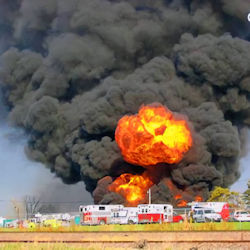Why We Have Process Safety Management
The Problem
Unexpected releases of toxic, reactive, or flammable liquids and gases in processes involving highly hazardous chemicals have been reported for many years
Incidents continue to occur in various industries that use highly hazardous chemicals that may be toxic, reactive, flammable, or explosive, or exhibit a combination of these properties.
Regardless of the industry that uses these highly hazardous chemicals, there is a potential for an accidental release any time they are not properly controlled. This, in turn, creates the possibility of disaster.
Recent major disasters include the following:
- The 1984 Bhopal, India, incident resulting in more than 2,800 deaths. This is considered the worst industrial disaster of all time.
- The October 1989 Phillips Petroleum Company, Pasadena, TX, incident resulting in 23 deaths and 132 injuries.
- The December 2005 BP Texas City Refinery explosion with 100 employees injured and 15 confirmed dead.
- The February 2010 Connecticut power plant explosion which resulted in 27 injuries and five deaths.
- The August 26, 2012 Amuay Oil Refinery explosion in Venezuela that wounded dozens and killed at least 39 people, including one child.
Knowledge Check Choose the best answer for the question.
1-1. Which of the following industrial disasters was considered historically the worst of all time?
You forgot to answer the question!

